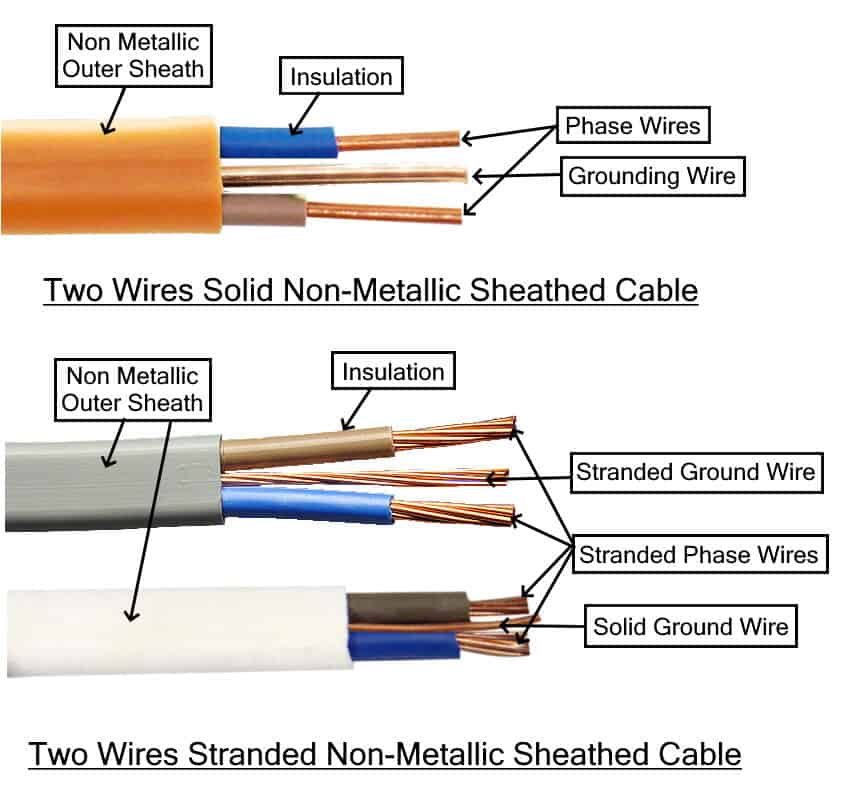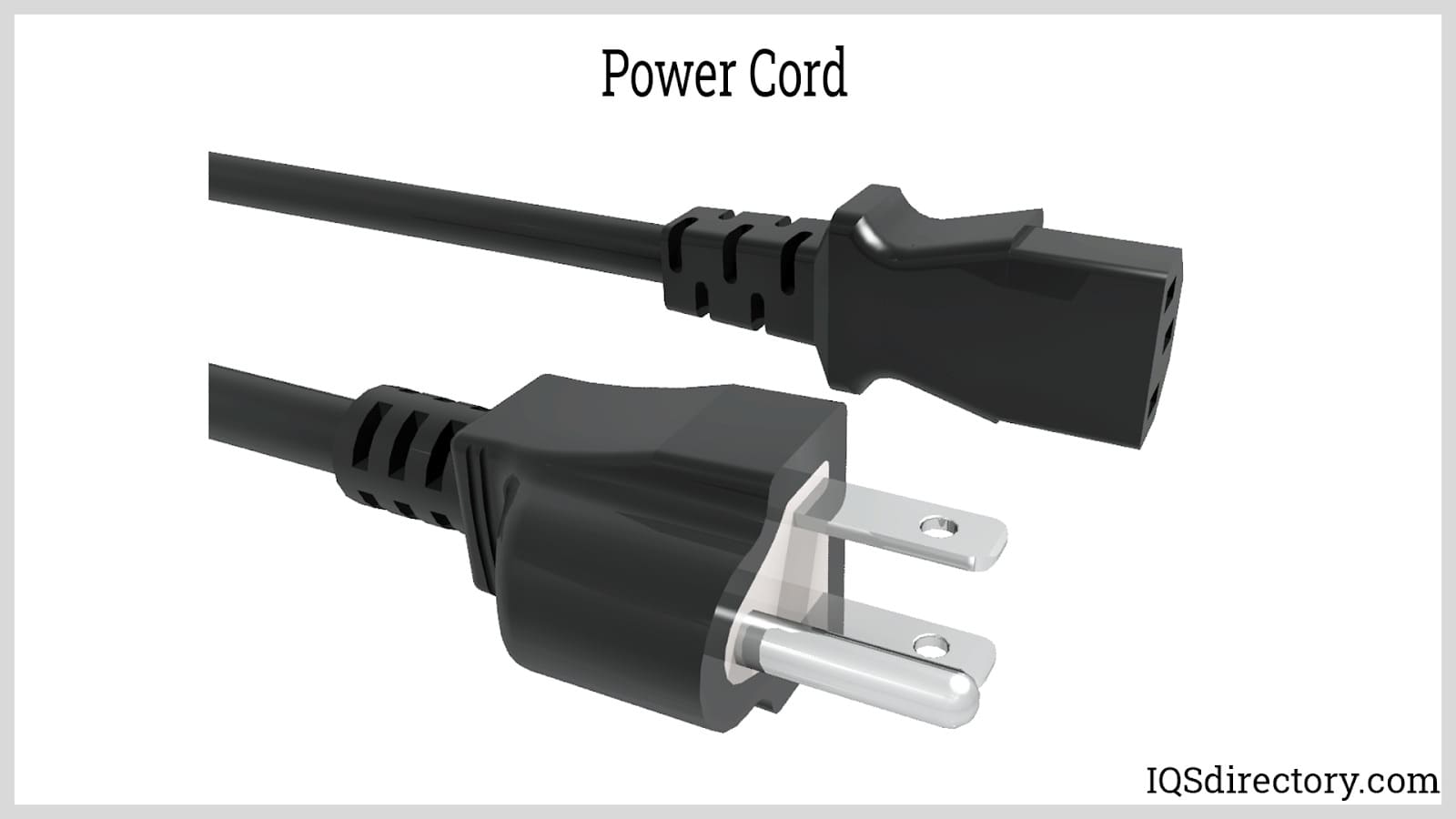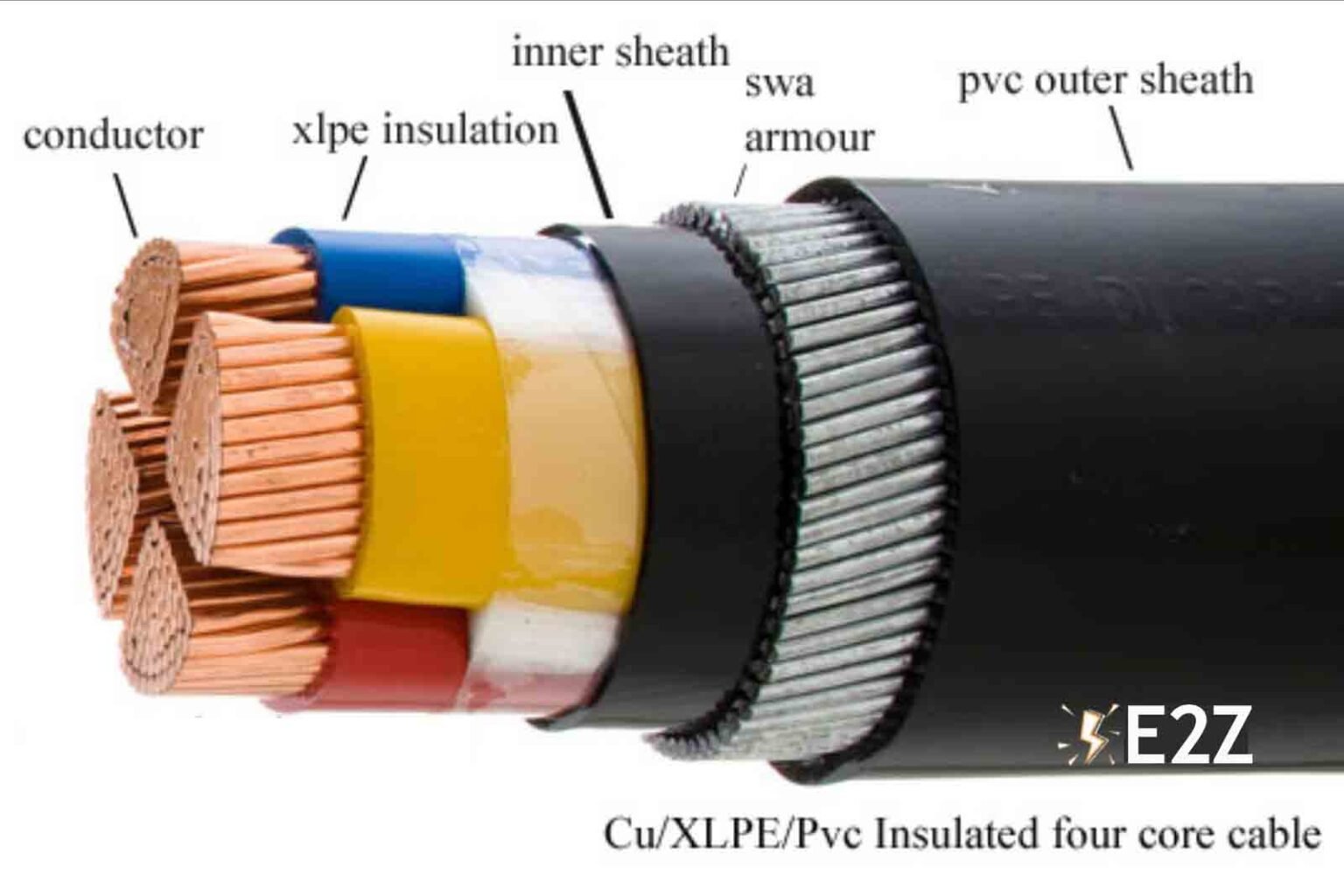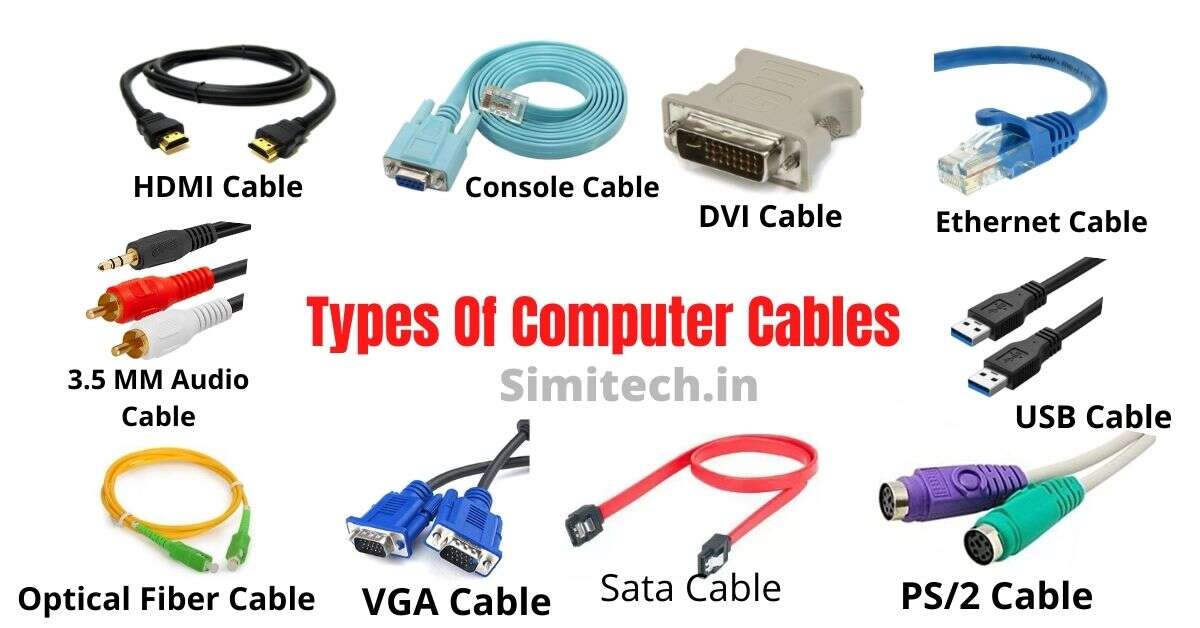Peerless Tips About What Is The Cable Cord Called

Unraveling the Mystery
1. Beyond Just "That Thingy"
Ever rummaged through a drawer overflowing with wires and cables, desperately searching for the right one? You know, the one that connects your printer, charges your phone, or links your TV to the world? And while you might affectionately (or not so affectionately) refer to it as "that thingy," there's actually a more specific — and helpful — name for it: a cable cord. Simple, right? But beneath that simple label lies a surprisingly diverse world of connectors, standards, and functionalities.
Think about it. You wouldn't call every car a "thingy with wheels," would you? There's a sedan, a truck, an SUV — each with its own purpose. Similarly, cable cords come in a variety of types, each designed for a specific job. Using the wrong one can be frustrating, and sometimes even damaging, to your devices. So, let's dive a little deeper than "thingy" and explore the fascinating (okay, maybe mildly interesting) world of cable cords.
The term "cable cord" itself is a bit of an umbrella term. Its like saying "fruit" — it covers a lot of ground. To truly understand what that cable cord is called, you need to identify its specific type. Are we talking about the thick power cord that keeps your laptop alive? Or the slender USB cable that transfers data to your phone? Is it a video cable with HDMI connections?
Think of identifying the right cable cord like figuring out the perfect spice for a dish. You wouldn't throw cumin into a cake recipe (probably). Knowing the purpose of the cable helps you narrow down the possibilities. We will get more specific on some cable names below.

Types Of Electrical Wires And Cables Technology
Decoding the Alphabet Soup
2. USB
Let's start with the king of connectivity: USB (Universal Serial Bus). This is the one you're probably most familiar with. From charging your phone to connecting your keyboard to your computer, USB cables are everywhere. But even within the USB family, there are different types. There's USB-A (the classic rectangular connector), USB-B (often found on printers), USB-C (the newer, reversible connector), and Mini-USB/Micro-USB (smaller versions for older devices).
The USB standard has also evolved over time. We've gone from USB 1.0 (slow) to USB 2.0 (faster) to USB 3.0 and beyond (even faster!). The higher the number, the quicker the data transfer speeds. This is important to note because using an older USB cable with a newer device might bottleneck its performance.
One of the great things about USB-C is its versatility. It can handle data transfer, power delivery, and even video output. Many modern laptops and phones use USB-C as their primary port, making it a true all-in-one solution. Think of it as the Swiss Army knife of cable cords!
Imagine trying to explain USB to someone from the 1950s. "It's a thing that connects your talking box to your picture box to your music box and also charges them all with electricity!" They'd probably think you were describing some kind of futuristic Frankenstein monster.
3. HDMI
Next up is HDMI (High-Definition Multimedia Interface). This cable is your go-to for connecting your TV to your Blu-ray player, gaming console, or streaming device. HDMI cables transmit both video and audio signals in high definition, delivering a crisp, clear picture and immersive sound. No more fuzzy images or tinny audio!
Like USB, HDMI has different versions, each with increased bandwidth and capabilities. HDMI 2.0, for example, supports 4K resolution at 60Hz, while HDMI 2.1 can handle 8K resolution at 60Hz or 4K resolution at 120Hz. So, if you're rocking a fancy new TV, make sure your HDMI cable is up to the task. Otherwise, you might not be getting the full visual experience.
A lesser-known fact about HDMI is that it also supports Audio Return Channel (ARC) and Enhanced Audio Return Channel (eARC). These features allow your TV to send audio back to your soundbar or receiver through the same HDMI cable, simplifying your setup. No more tangled mess of audio cables behind your TV!
Think of HDMI as the translator between your devices and your TV. It takes the digital signals and converts them into a beautiful, high-definition picture that everyone can enjoy. Without it, you'd be stuck with blurry, pixelated images and muffled sound. No fun at all!
4. Power Cords
Of course, we can't forget about power cords. These cables are responsible for delivering electricity to your devices. Power cords come in a variety of shapes and sizes, depending on the device they're powering. Laptops, for example, typically use a power brick with a detachable cord. Desktop computers use a standard three-prong power cord. And smaller devices like phones and tablets use USB power adapters.
It's important to use the correct power cord for your device. Using the wrong voltage or amperage can damage your device or even create a fire hazard. Always check the label on your device or power adapter to ensure that you're using the correct cord. Never ever use a power cord that looks damaged or frayed.
You might have noticed that some power cords have a two-prong plug, while others have a three-prong plug. The third prong is a ground wire, which helps to prevent electrical shocks. If your device has a three-prong plug, it's important to use a grounded outlet. Don't try to remove the ground prong or use an adapter to make it fit into a two-prong outlet.
Imagine power cords as the veins and arteries of your electronic ecosystem. They're the lifelines that keep everything running. Without them, your devices would be nothing more than useless bricks. Respect the power cord!

Standards And Uses Of Power Cords
Beyond the Basics
5. Ethernet
While Wi-Fi is convenient, sometimes you need a more reliable and faster connection. That's where Ethernet cables come in. These cables connect your computer directly to your router or modem, providing a stable and high-speed internet connection. Ethernet cables are often used for gaming, streaming, and other bandwidth-intensive activities.
Ethernet cables are categorized by their performance, with categories like Cat5, Cat5e, Cat6, and Cat6a. Higher categories offer faster speeds and better shielding against interference. For most home users, Cat5e or Cat6 cables are sufficient. However, if you're building a new network or upgrading your existing one, consider using Cat6a cables for future-proofing.
One of the benefits of using Ethernet is that it's less susceptible to interference than Wi-Fi. Wi-Fi signals can be affected by walls, appliances, and other devices, leading to slower speeds and dropped connections. Ethernet, on the other hand, provides a more consistent and reliable connection.
Think of Ethernet as the express lane on the information superhighway. It's a direct connection to the internet, bypassing all the traffic and congestion of Wi-Fi. If you need speed and reliability, Ethernet is the way to go.
6. Audio Cables
Audio cables come in a variety of forms, including RCA cables, 3.5mm audio cables (also known as headphone jacks), and optical audio cables. RCA cables are often used to connect older audio equipment, such as turntables and CD players. 3.5mm audio cables are commonly used for headphones, speakers, and mobile devices. Optical audio cables transmit audio signals digitally, providing a high-quality audio experience.
Choosing the right audio cable depends on the devices you're connecting and the type of audio signal you're transmitting. For example, if you're connecting a turntable to a receiver, you'll need RCA cables. If you're connecting your headphones to your phone, you'll need a 3.5mm audio cable. And if you're connecting your TV to a soundbar, you might use an optical audio cable.
One thing to keep in mind when choosing audio cables is the quality of the cable itself. Cheaper cables may use inferior materials and construction, leading to signal loss and degradation. Investing in higher-quality cables can improve your audio experience.
Audio cables are the unsung heroes of the listening experience. They translate electrical signals into the beautiful sounds that fill our ears. Without them, our music would be silent, and our movies would be devoid of their immersive soundtracks.

Cable Cord Care
7. Prevention is Key
Once you've identified your cable cords and are using them correctly, it's important to take care of them to prolong their lifespan. Avoid bending or twisting the cables excessively, as this can damage the internal wiring. Store your cables neatly when they're not in use, and avoid leaving them tangled in a drawer. A little bit of care can go a long way.
Consider using cable ties or organizers to keep your cables tidy and prevent them from getting tangled. This not only makes your setup look cleaner but also reduces the risk of damage to the cables.
Regularly inspect your cables for any signs of damage, such as frayed wires or cracked insulation. If you find any damage, replace the cable immediately. Using a damaged cable can be dangerous and may damage your devices.
Treat your cable cords with respect, and they'll reward you with years of reliable service. A little bit of maintenance can save you a lot of headaches down the road.
8. Proper Storage
Proper storage is important for cable cord longevity. Avoid storing them in areas with extreme temperatures or humidity, as this can damage the insulation and wiring. A cool, dry place is ideal. When coiling your cables, avoid making tight bends, as this can stress the wires. Instead, use a looser coil or a cable organizer.
When disconnecting cables, always pull on the connector, not the cable itself. Pulling on the cable can damage the internal wiring and shorten the lifespan of the cable. A gentle touch is always best.
Consider labeling your cables so you can easily identify them in the future. This can save you time and frustration when you need to connect or disconnect devices. A simple label maker can be a lifesaver.
Store your cables with care, and they'll be ready to serve you whenever you need them. A little bit of organization can make a big difference.

FAQ
9. Quick Answers to Common Cable Cord Conundrums
Let's tackle some frequently asked questions to solidify your newfound cable cord knowledge.
Q: What's the difference between a cable and a cord?
A: Generally speaking, "cable" and "cord" are often used interchangeably. However, "cable" can sometimes refer to a thicker, more heavy-duty wire, while "cord" might describe a thinner, more flexible wire. It's a subtle distinction, and in most cases, you can use either term without causing confusion.
Q: Can I use any USB cable to charge my phone?
A: While most USB cables will charge your phone, the charging speed can vary. Using a cable designed for fast charging will deliver power more quickly. Also, make sure the cable is compatible with your phone's charging port (USB-C, Micro-USB, etc.).
Q: What does "HDMI ARC" mean?
A: HDMI ARC (Audio Return Channel) allows your TV to send audio back to a soundbar or receiver through the same HDMI cable that's sending video to the TV. This eliminates the need for a separate audio cable, simplifying your setup.
Q: Why does my charging cable keep breaking?
A: Cables usually break from strain near the connectors. Avoid bending them sharply at the ends. Consider using cable protectors or reinforced cables to extend their lifespan.
Q: How can I tell which HDMI cable is best for my 4K TV?
A: Look for HDMI cables that support HDMI 2.0 or later. These cables have enough bandwidth to handle 4K resolution at 60Hz. For HDR content, ensure the cable supports HDR10 or Dolby Vision.
